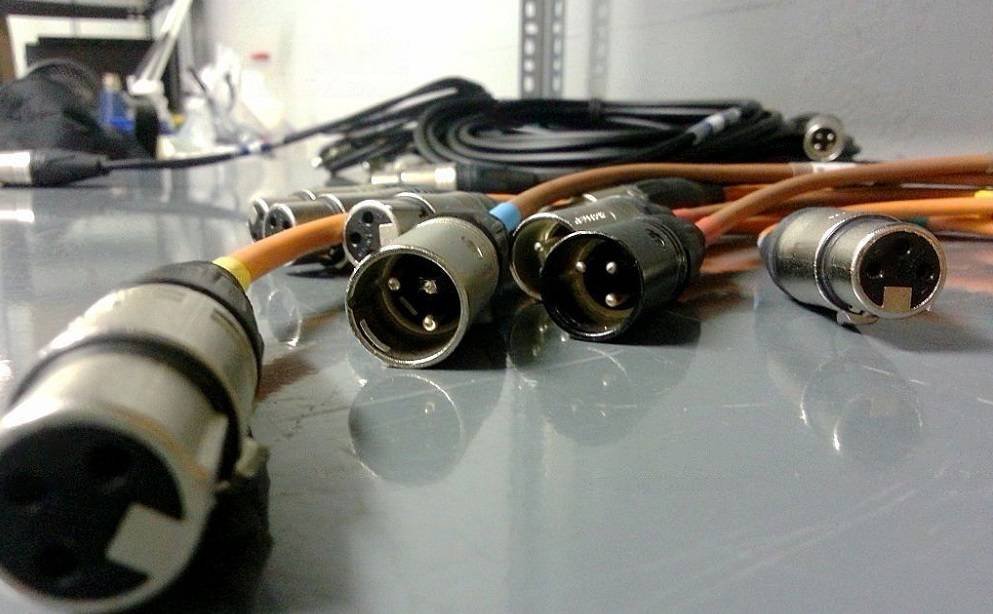A coaxial speaker cable is a type of wire that connects audio equipment, such as sound speakers, amplifiers, and receivers. This can also be for video and television equipment.
What is Coaxial Speaker Cable?
A coaxial speaker cable is a type of electrical cable that is often used in audio applications. The term “coaxial” refers to the fact that the two conductors are arranged in a cylindrical shape around a central core. The central core is typically made of copper, and the outer conductor is typically made of an aluminum or copper-clad steel mesh.
Coaxial speaker cable is often used in applications where high-quality sound reproduction is important, such as in home theater systems. This type of cable offers several advantages over other types of audio cables.
First, a coaxial speaker cable can carry a signal with very little interference. This is due to the fact that the two conductors are shielded from each other by the central core. Second, the coaxial speaker cable is relatively easy to install and does not require special connectors. Finally, coaxial speaker cable is relatively inexpensive and readily available from most electronics stores.
Why You Should Use Coaxial Speaker Cable
If you’re looking to improve the sound quality of your home theater or audio system, one of the best ways to do so is by upgrading to a coaxial speaker cable. Coaxial speaker cable is superior to standard speaker wire in a number of ways and can make a big difference in the overall fidelity of your system. Here’s a look at why you should use coaxial speaker cable:
1. Coaxial cable has better shielding than standard speaker wire, which means it’s less susceptible to interference from other electronics and electromagnetic fields. This results in clearer, more accurate sound reproduction.
2. Coaxial cable is also better at handling high frequencies than standard speaker wire. This means that sounds will be more detailed and realistic, with less “smearing” of highs.
3. Coaxial cable is less likely to cause impedance mismatch problems than standard speaker wire. Impedance mismatches can result in sound quality issues, so using a coaxial cable can help avoid these problems.
4. Coaxial cables are also much easier to install than standard speaker wires since they don’t require any special connectors or termination methods. Just plug them into your speakers and receiver and you’re good to go!
If you’re looking for an easy way to improve the sound quality of your home theater or audio system, upgrading to a coaxial speaker cable is a great option.
How to Choose a Coaxial Speaker Cable

When it comes to choosing a coaxial speaker cable, there are a few things you need to take into account. The most important factor is the gauge, or thickness, of the wire. The thicker the wire, the more current it can carry and the better it will be at handling bass frequencies. Another important factor is the length of the cable. The longer the cable, the more resistance it will have and the more power it will lose. You also need to consider what type of connectors you need. The most common type is a banana plug, but there are also Speak-On and 1/4″ connectors.
Types of Coaxial Speaker Cables (video)
There are three main types of coaxial speaker cables: single-conductor, dual-conductor, and quad-conductor.
Single-conductor cables are the most common type of coaxial cable. They are made from a single piece of wire and have a single conductor that carries the signal. These cables are typically used for low-power applications such as connecting a TV to a sound system.
Dual-conductor cables have two conductors that carry the signal. These cables are typically used for higher-power applications such as connecting an amplifier to speakers. Quad-conductor cables have four conductors and are typically used for professional audio applications.
Benefits of Using a Coaxial Speaker Cable
If you’re looking to get the most out of your home theater or audio setup, you’ll need to make sure you’re using the right type of speaker cable. Coaxial speaker cable is designed specifically for use with home theater and audio systems and offers a number of benefits over other types of speaker cable.
The coaxial speaker cable is made up of two insulated inner conductors, surrounded by a common outer conductor. This design helps to minimize interference and provides a clear, concise signal. Additionally, coaxial speaker cable is much less likely to suffer from crosstalk than other types of speaker cable.
Another benefit of using a coaxial speaker cable is that it’s easy to run through walls and ceilings. This makes it ideal for installations where running traditional speaker wire would be difficult or impossible. Additionally, coaxial cable is available in a variety of different gauges, so you can choose the best one for your application.
So if you’re looking for the best possible audio experience, make sure you use a coaxial speaker cable. It’s designed specifically for home theater and audio applications and offers a number of advantages over other types of speaker wire.
Alternatives to Coaxial Speaker Cables
If you’re looking for alternatives to coaxial speaker cables, you have a few different options. You can choose from traditional speaker wire, balanced XLR cable, or even optical cable. Each has its own set of benefits and drawbacks, so it’s important to choose the right option for your needs.
Traditional speaker wire is the most common type of speaker cable. It’s relatively cheap and easy to find, and it can be used with most types of speakers. However, it’s not as durable as some other options and it can be difficult to work with if you’re not familiar with electrical wiring.
A balanced XLR cable is a great option if you need a durable, high-quality speaker cable. It’s also easy to work with and connect, which makes it a good choice for beginners. However, it’s more expensive than traditional speaker wire and can be difficult to find in stores.
The optical cable is another option that offers some benefits over traditional speaker wire. It’s immune to interference from electromagnetic fields, so it won’t degrade the sound quality of your music. It’s also much thinner than other types of cables, so it’s easier to route through your home theater system. However, optical cable is more expensive than both traditional speaker wire and balanced XLR cable.


